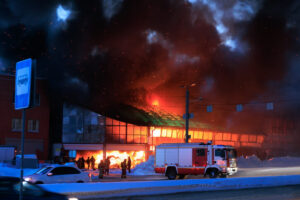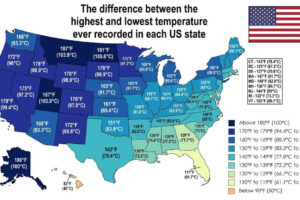Keeping Safe in the Cold: Workplace: Strategies and Statistics
As much as the temperatures begin to drop, the rates of cold stress at the workplace also tend to increase. Cold stress can cause health complications to workers and employers, therefore it has to be addressed. This guide includes information on cold stress, with information on statistics, industry-specific information, and preventative measures to take in regard to cold stress.
Understanding Cold Stress
Cold stress is a condition that arises when the human body cannot regulate internal temperature. This may culminate into cold-associated complications like hypothermia, frostbite, and trench fever. These conditions can be serious and cannot wait and need medical attention.
Hypothermia
Hypothermia is a dangerous condition when the body temperature drops because the heat loss outpaces the heat production. These symptoms include shaking, confusion, difficulty in speaking, and loss of balance. In case of the failure to treat hypothermia, the sufferer can be put into a state of unconsciousness or even die.
Frostbite
Frostbite is a condition in which the skin and tissues underneath it freeze. It most frequently affects the distal structures of the body, such as fingers, toes, nose, and ears. Frostbite also causes symptoms such as numbness, pale or grayish-yellow skin, and firm or waxy skin texture. The extreme form of this condition can lead to multiple tissue necrosis and, hence, limb loss..
Trench Foot
Trench foot or immersion foot appears as a consequence of staying in wet and cold conditions for a long. The symptoms of the disease are redness of the skin, pinprick sensation, edema, and vesicles. If not treated, trench foot can lead to infection and long-term effects.
Incidence and Impact
Statistics on Cold Stress Incidents and Risks:
- In the U.S., an average of 22 civilian deaths, 171 civilian injuries, and $484 million in property damage is incurred per year from hot work.
- US fire departments responded to an estimated average of 3,396 structure fires involving hot work each year from 2017 to 2021. These fires caused an estimated yearly average of 19 civilian deaths, 120 civilian injuries, and $292 million in direct property damage.
- The Occupational Safety and Health Administration (OSHA) reports that hot work activities contribute to approximately 8% of all workplace fatalities related to fires and explosions.
- The Bureau of Labor Statistics (BLS) indicates that workers involved in hot work have a higher rate of burn injuries, with approximately 10,000 cases reported annually.
Industry-Specific Data
Certain industries are more prone to cold stress than others. The construction, agriculture, and fishing industries, for instance, report higher rates of cold-related injuries. OSHA highlights that workers in these fields are at greater risk due to prolonged exposure to cold environments.
Construction Industry
The construction industry sees a significant number of cold-related injuries, accounting for about 30% of all fires on construction sites. This is due to the nature of the work, which often takes place outdoors and in varying weather conditions.
Manufacturing Sector
In the manufacturing sector, hot work is responsible for 45% of all fire-related incidents. Workers in these environments are frequently exposed to cold conditions, especially those who work in refrigerated areas or handle cold materials.
Geographical Variations
Effects of cold stress differ depending on the area. According to the CDC, geographical areas in the U. S that experience very cold weather have more cases of cold-related injuries. Nevertheless, temperatures in warmer climates are also known to drop at times, and this also results in higher cases of cold stress.
Northern Regions
In the northern areas, freezing for a long time at low temperatures is common. Employees in these regions are at high risk of cold stress, and they need to safeguard themselves adequately.
Southern Regions
Southern regions, although comparatively warm, the temperatures can change rapidly. People in these areas are likely to be more vulnerable to cold-related illnesses during cold fronts because they are not accustomed to cold weather.
Cost to Employers
Cold stress costs employers a lot of money. The OSHA has indicated that cold-related injuries may result in huge costs through medical expenses, compensation, and lost time. Promoting safety at the workplace can reduce these costs.
Medical Expenses
These injuries are very likely to attract a hefty bill from the doctor. Hypothermia, frostbite, and trench foot treatments can, at times, be expensive, especially when one has to be admitted to a hospital.
Lost Productivity
Cold stress costs organizations in terms of employee work days lost or reduced work efficiency. Some of the effects of cold-related injuries may be that workers who are affected may have to take some days off to seek medical attention, thus reducing the output.
Workers’ Compensation Claims
Business people may suffer higher workers’ compensation claims costs because of cold injuries. These claims can result in increased insurance premiums and other costs incurred in the process.
Preventive Measures for Cold Stress
Employers can take several steps to prevent cold stress and protect their workers:
Cold Stress
Preventive Measures for Cold Stress
- Training and Education: Employees should be informed on the dangers of cold stress and the signs of developing the conditions. These toolbox talks can be conducted on a regular basis to remind workers of this knowledge.
- Heated Break Areas: Providing heated shelters for breaks can help workers warm up and reduce the risk of cold stress.
- Appropriate Clothing: The clothes worn by the workers are important. This includes wearing many layers of clothes, thick gloves, and high rubber shoes.
- Hydration and Nutrition: Encouraging workers to stay hydrated and eat high-energy foods can help maintain body heat.
- Work Scheduling: It is recommended that working hours should be altered in a way that will prevent exposure to the severest of the winter weather.
Implementing Winter Safety Measures
Implementing comprehensive winter safety measures is essential for preventing cold stress. These measures include:
- Monitoring Weather Conditions: Monitor the weather and be prepared to make changes to the work schedules in case of a change in weather.
- Emergency Preparedness: Make sure that blankets, hot beverages, and any other emergency items are well stocked.
- First Aid Training: Teach the workers the signs and symptoms of hypothermia and frostbite and how to give first aid for cold-related injuries.
Cold-Related Injuries: What to Watch For
It is important to know the signs of cold-related injuries so that they can be treated on time. Key symptoms include:
- Hypothermia: Cold, tremors, drowsiness, slurred speech, and loss of coordination.
- Frostbite: Tingling, a pale or ashen appearance, and the skin feels cold and stiff to the touch.
- Trench Foot: Skin becomes red, numb, and swollen, and blisters develop.
Stress and Feeling Cold
Stress and Feeling Cold
Notably, stress can also be said to be involved in the ways in which the body reacts to cold. Stress hinders the body’s thermoregulation process meaning that workers will be more prone to cold stress. As for this, employers should pay attention to and offer assistance for managing stress.
Cold Stress Toolbox Talk
Carrying out a cold stress toolbox talk is instrumental in ensuring that the workers are informed of the risks and ways of preventing them. These talks should cover:
- The signs and symptoms of cold-related injuries
- Proper dressing when it is cold
- The significance of taking a rest in the hot areas.
- What to do in case of a cold-related emergency
Long-term Effects and Chronic Cold Exposure
cold environments can affect health in the long term beyond hypothermia, frostbite, and trench foot dangers. Those employees who work in cold environments may suffer from diseases like arthritis, respiratory diseases, and circulatory diseases.
Arthritis
Cold and damp environments can also be very harmful to arthritic patients since it worsens the symptoms of the disease if one is frequently exposed to it. Employees with chronic diseases may experience deterioration of their health status, which means that the pain threshold will be higher, and the employees will be more limited in their movements.
Respiratory Problems
Cold air also poses harm to the respiratory system and may cause asthma and bronchitis among other diseases. Cold air triggers constriction of the airways, owing to constriction of blood vessels supplying the airways’ muscles. These risks can be managed by the employers offering workers masks or scarves to cover their mouths and noses, warming the air they breathe.
Circulatory Disorders
Cold climate affects blood circulation and reduces the blood vessels’ size therefore putting pressure on the heart. This is even more worrisome for employees who already have cardiac issues. Colds can also affect the circulation system in the body, and this can cause frostbite if exposed to cold for a long time.

Cold Stress, Technology, and Innovation
Incorporation of technology and innovation in cold stress management is an effective way of improving the safety of employees at the workplace. Better surveillance equipment, gadgets, and enhanced fabrics that workers wear are some of the ways technology can assist in protecting workers.
Advanced Monitoring Systems
Technological advancements have made it possible to constantly monitor environmental conditions. Measuring devices such as thermometers, hygrometers, and anemometers may be useful in obtaining data that can be used to control cold stress. This information can be of great help to employers in planning work schedules and protective measures.
Wearable Technology
Smart clothing that measures pulse rates and skin temperatures can help workers and supervisors identify cold stress. These devices offer timely feedback, allowing appropriate action to be taken before a worker’s health deteriorates.
Improved Clothing Materials
Discoveries in the fabrics used in the production of clothing have seen such attire as cold weather wear become highly efficient. Contemporary materials are created to better insulate, to draw moisture away from the body, and to remain supple in cold weather. If workers are provided quality clothing to wear, the chances of getting cold related injuries will be minimal.
Future Trends in Cold Stress Management
Looking ahead, several trends are emerging in the field of cold stress management:
Smart Clothing
Smart clothes equipped with sensors and heaters are also being developed and are in the process of increasing. These garments can track body temperature and further regulate heat to enhance workers’ protection in cold climates.
Enhanced Training Programs
VR and AR are considered to help develop cold-stress training. These immersion technologies may help create real-life conditions in cold environments where safety measures can be rehearsed.
AI and Predictive Analytics
Forecasting of weather conditions and potential cold stress risks is being done with the help of artificial intelligence (AI) and predictive analytics. These technologies can assist employers in predicting weather conditions in advance and planning working schedules and protective measures.
Conclusion
Cold stress is a serious concern in many workplaces, but with the right knowledge and precautions, it can be effectively managed. By integrating preventive measures for cold stress, providing proper training, and ensuring a supportive work environment, employers can protect their workers and reduce the incidence of cold-related injuries.
CEO of OSHAOutreachCourses, a platform that provides online workplace safety training. Passionate about the integration of technologies in making worksites safer for manual workers.












